Judaism

Judaism began about 3,500 years ago in the eastern Mediterranean. It originated as the common religion of a small nation of Hebrew tribes and is now the oldest monotheistic religion still practiced today. According to Jewish tradition, God revealed himself to Abraham, the ancestor of the Jewish people. God told him that the Hebrews should believe in and worship only one God. Centuries later, the prophet Moses received divine instruction for how Jews should live and worship.
The belief in one God is central to all forms of Judaism. The name of God in Hebrew is YHWH, often pronounced as Yahweh or Jehovah. God is often referred to by a euphemism, such as “the Lord,” as the true name can be considered too sacred to use. While all Jews recognize that the ritual laws given in the Torah are divinely inspired, denominations differ in how strictly they adhere to them. Some who identify as Jewish do not follow ritual laws at all, but instead follow Jewish morality as interpreted from sacred texts.
The Torah is the foundational text of Judaism. It narrates the story of creation, the origins of the Jewish faith, and God’s commandments for the Jewish people. The larger canon of sacred Tanakh writings and the religious commentary of the Talmud are also important texts.
Most Jewish congregations worship in a synagogue. In Reform Judaism, the synagogue may be referred to as a temple. Rabbi is the term used for spiritual leaders of Judaism. In Hasidic Judaism, the leader is instead called rebbe.
Listen to Rabbi Mark Cohn chant from the Torah Book of Genesis:
Listen to Rabbi Mark Cohn chant from the Torah Book of Exodus:
Listen to Rabbi Mark Cohn chant from the Torah Book of Deuteronomy:
Denominations
Reform – Reacting to the Enlightenment in the 18th and 19th centuries CE, European Jews sought to adapt their religious laws to the new philosophies and social movements of their time. These changes emphasize the evolving nature and diversity of religious practice.
Orthodox – Orthodox practices also developed out of the Enlightenment, but as a reaffirmation of the ritual laws found in the Torah. Orthodox denominations vary on how much they participate in secular culture, and include Modern Orthodox, Haredi, and Hasidic congregations.
Conservative – This denomination formed in the United States by Jews who wanted to fully participate in American culture, but did not agree with the changes to Jewish law and traditions employed by Reform Judaism.
Color
Colors are used to represent beliefs, traditions, and concepts in many religious traditions. Blue is the color of the heavens in Judaism. Because of this, it was adopted as one of the colors of the Israeli flag, and so has become synonymous with Jewish nationalism. In addition, the Torah describes traditional clothing adorned with blue-dyed tassels, as well as blue coverings for ritual objects.
White was chosen as the exhibit’s background color because it is meaningful to each of the five religions. In Judaism, white is the color of light, peace, intellect, and purity. It also symbolizes purity from sin. It is also one of the two colors of the Israeli flag.
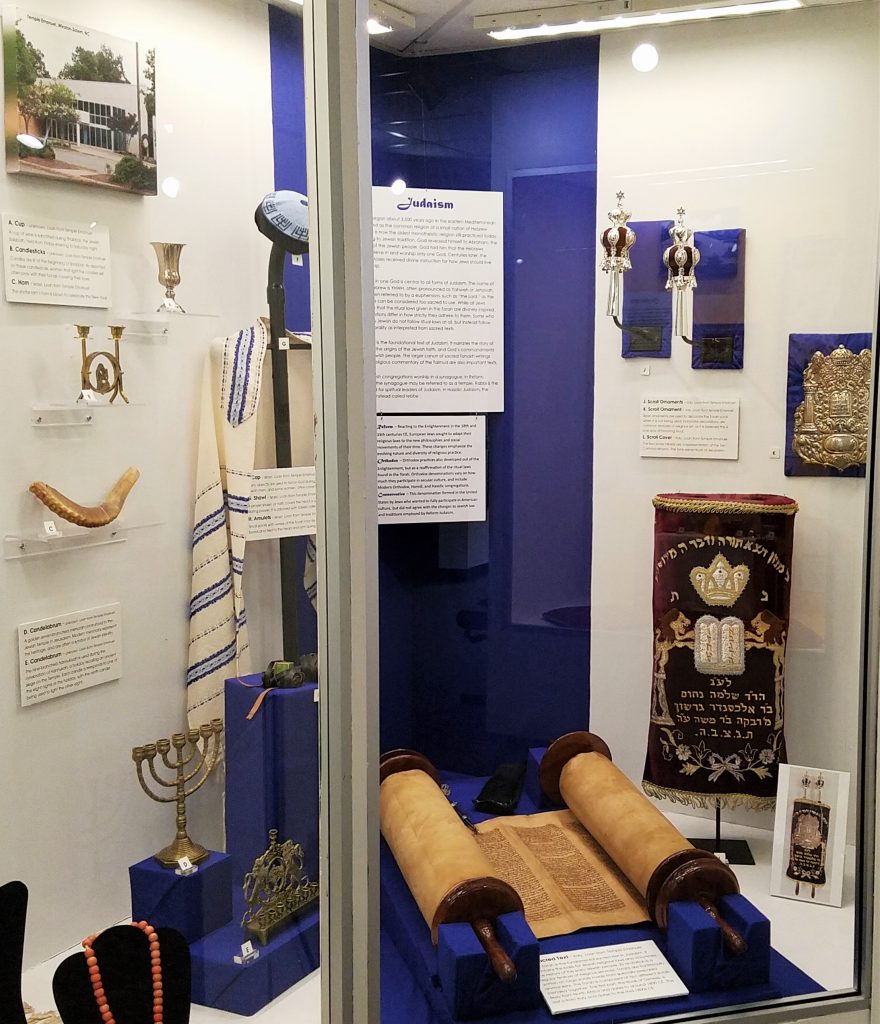
Learn about the featured objects below
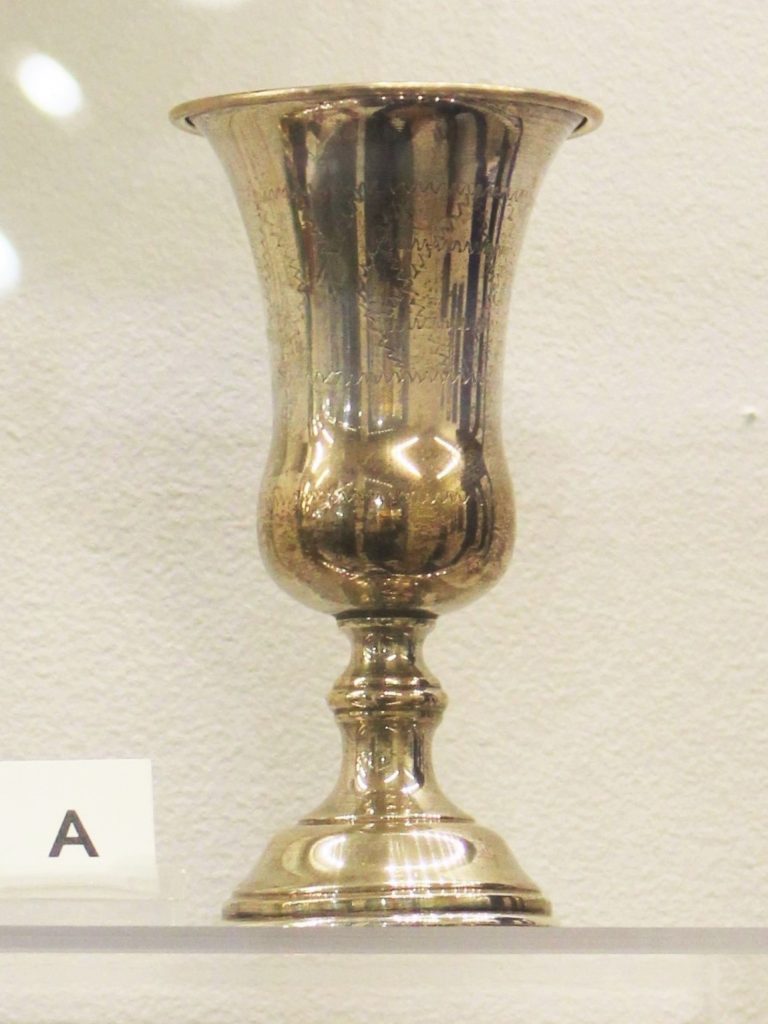
A. Cup
Unknown
Loan from Temple Emanuel
A cup of wine is blessed during Shabbat, the Jewish sabbath, held from Friday evening to Saturday night.
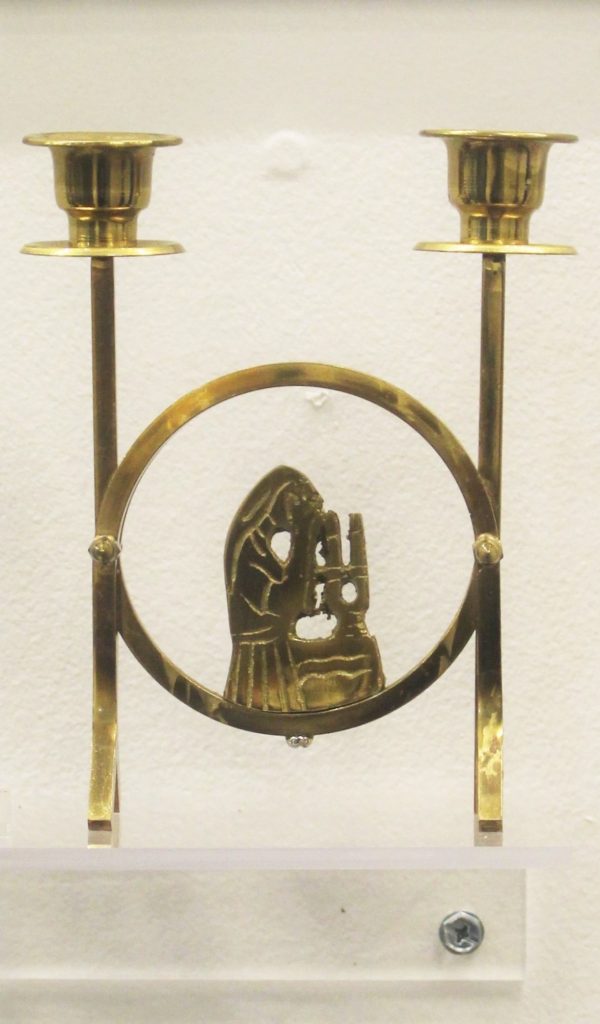
B. Candlesticks
Unknown
Loan from Temple Emanuel
Candles are lit at the beginning of Shabbat. As depicted on these candlesticks, women who light the candles will often pray with their hands covering their eyes.
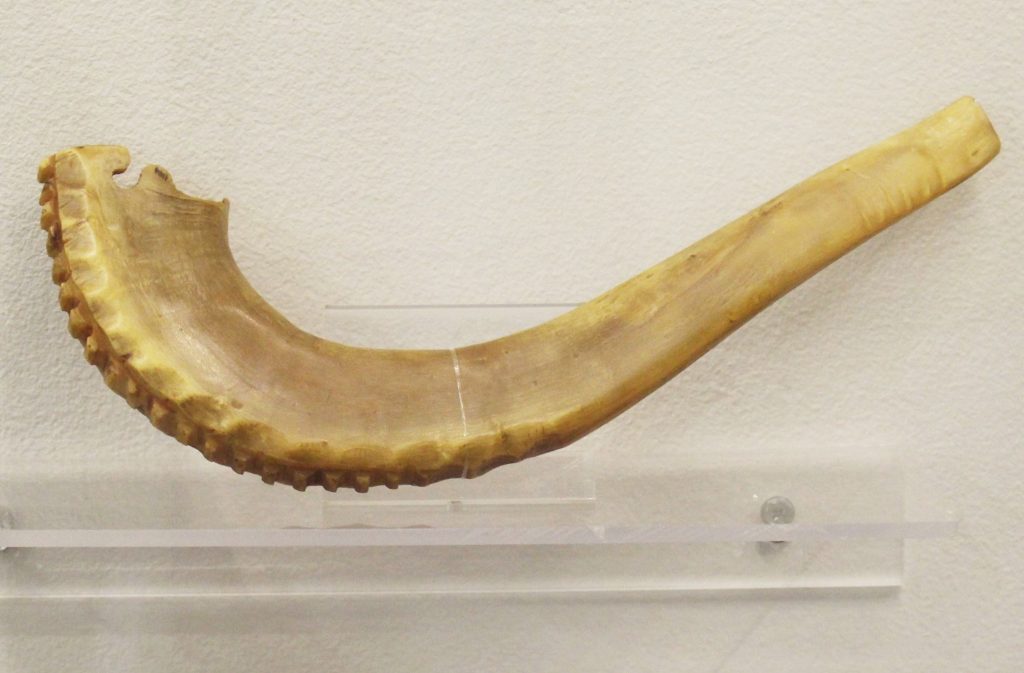
C. Horn
Israel
Loan from Temple Emanuel
The shofar ram’s horn is blown to celebrate the New Year.
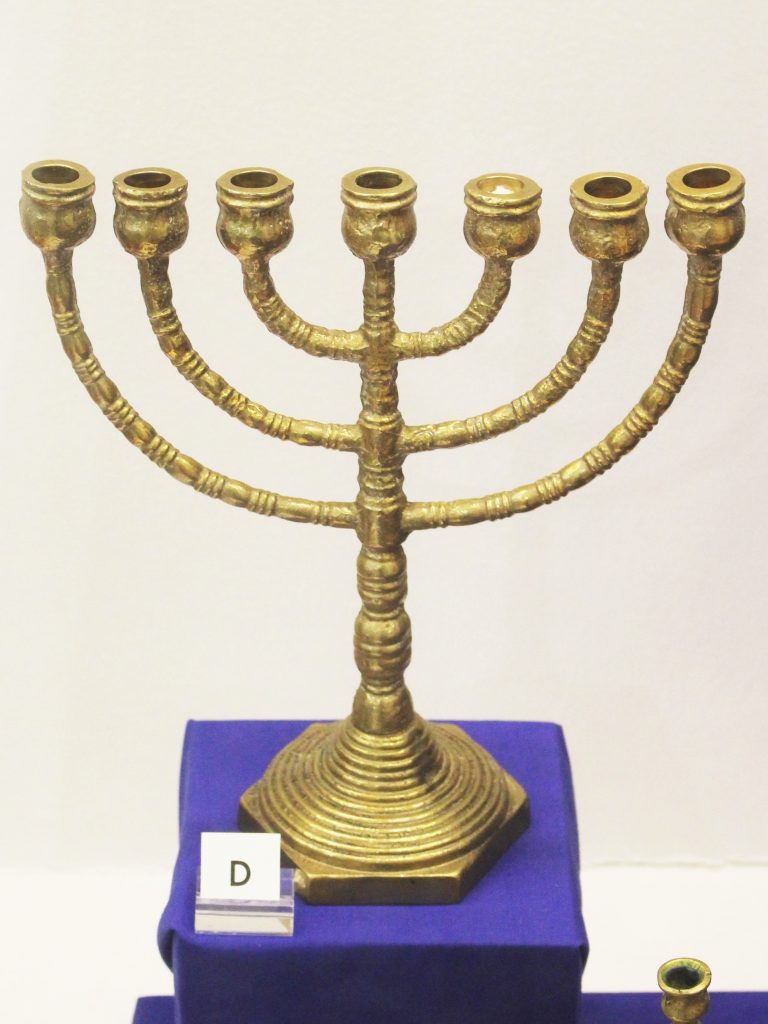
D. Candelabrum
Unknown
Loan from Temple Emanuel
A golden seven-branched menorah once stood in the Jewish temple in Jerusalem. Modern menorahs represent this heritage, and are often a symbol of Jewish identity.
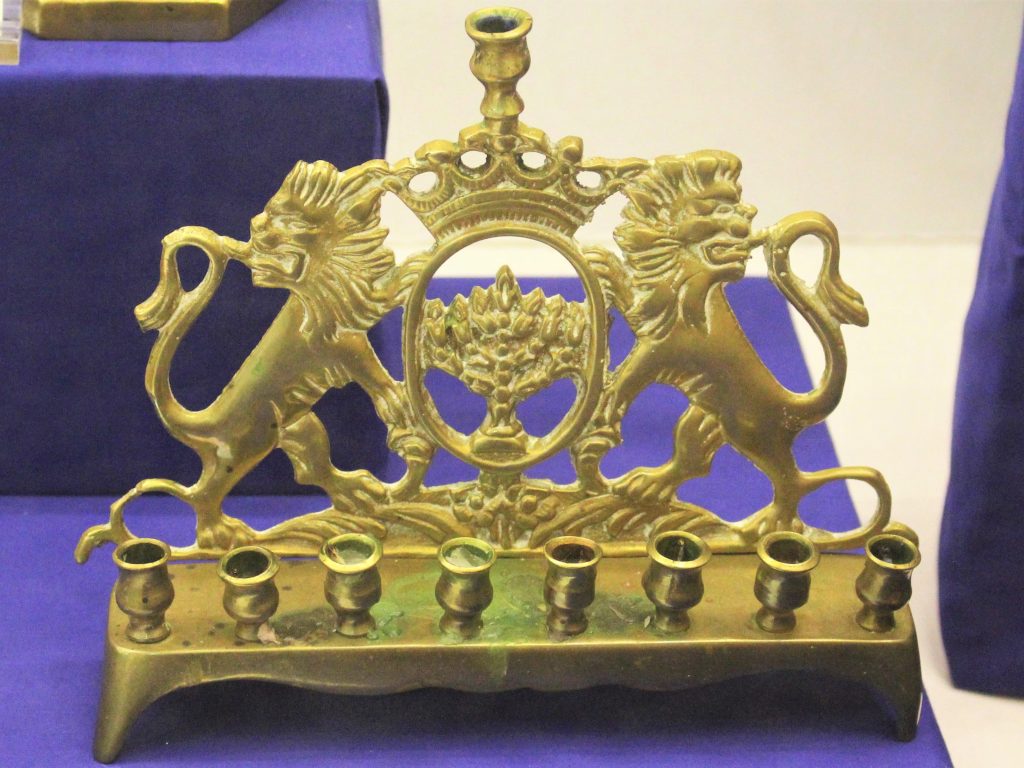
E. Candelabrum
Unknown
Loan from Temple Emanuel
A nine-branched hannukiyah is used during the celebration of Hannukah, a holiday recalling an ancient siege on the Temple. Each candle corresponds to one of the eight nights of the holiday, with the ninth candle being used to light the other eight.
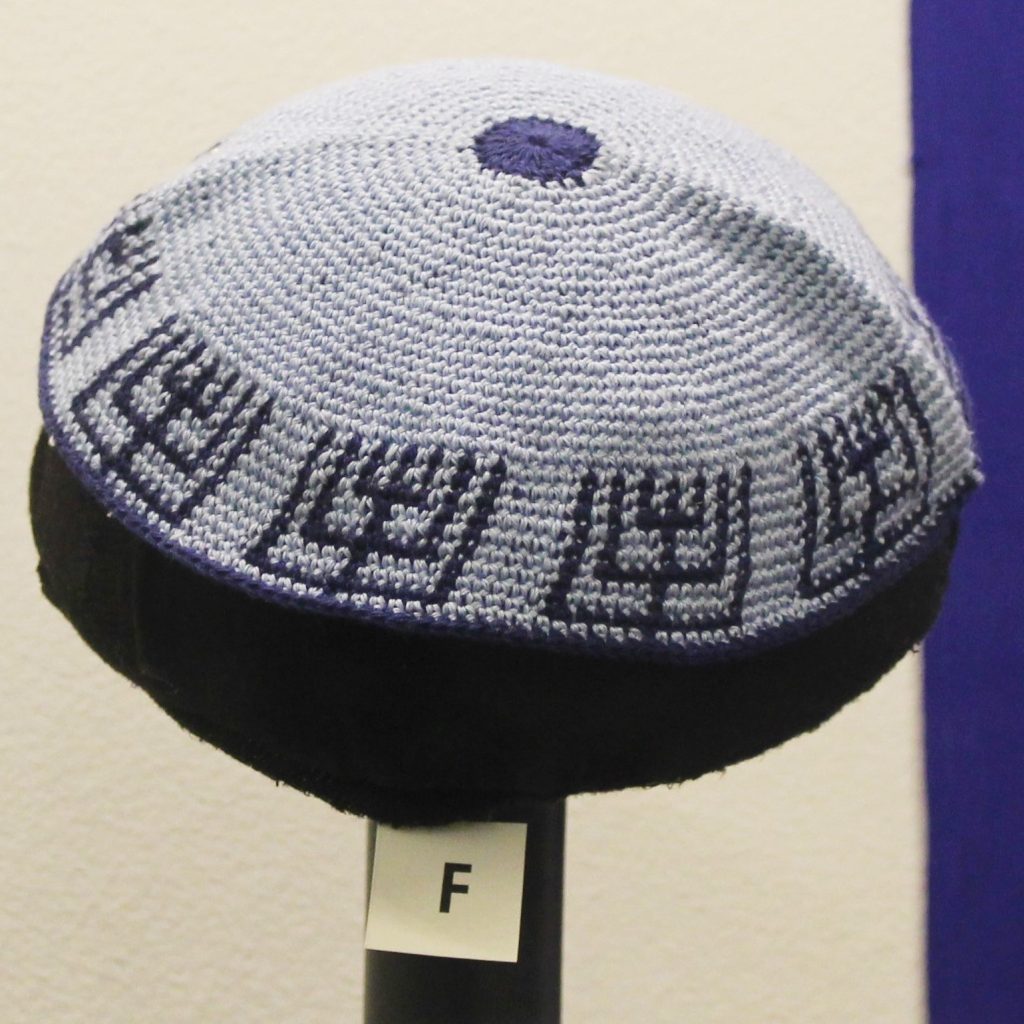
F. Cap
Israel
Loan from Temple Emanuel
Many objects are used to honor God during prayer. Jewish men, and some women, often cover their heads.
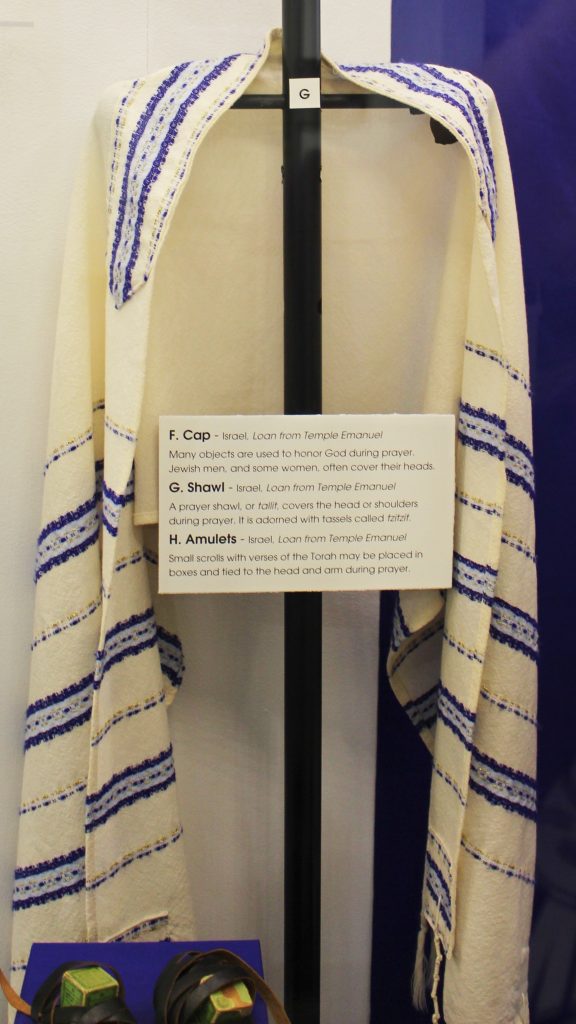
G. Shawl
Israel
Loan from Temple Emanuel
A prayer shawl, or tallit, covers the head or shoulders during prayer. It is adorned with tassels called tzitzit.
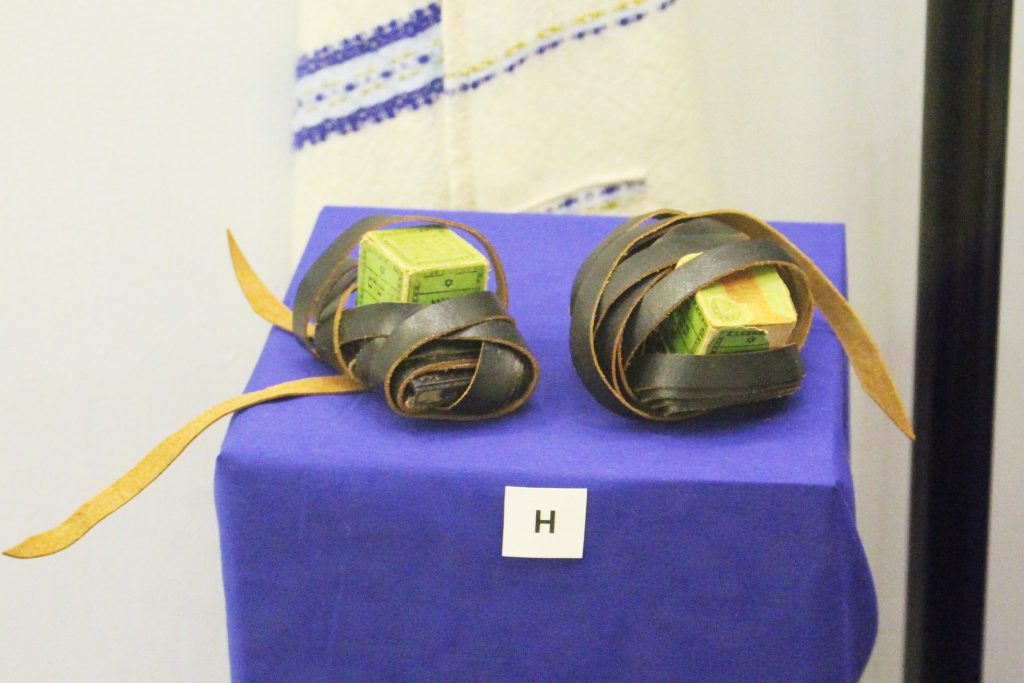
H. Amulets
Israel
Loan from Temple Emanuel
Small scrolls with verses of the Torah may be placed in boxes and tied to the head or arm during prayer.
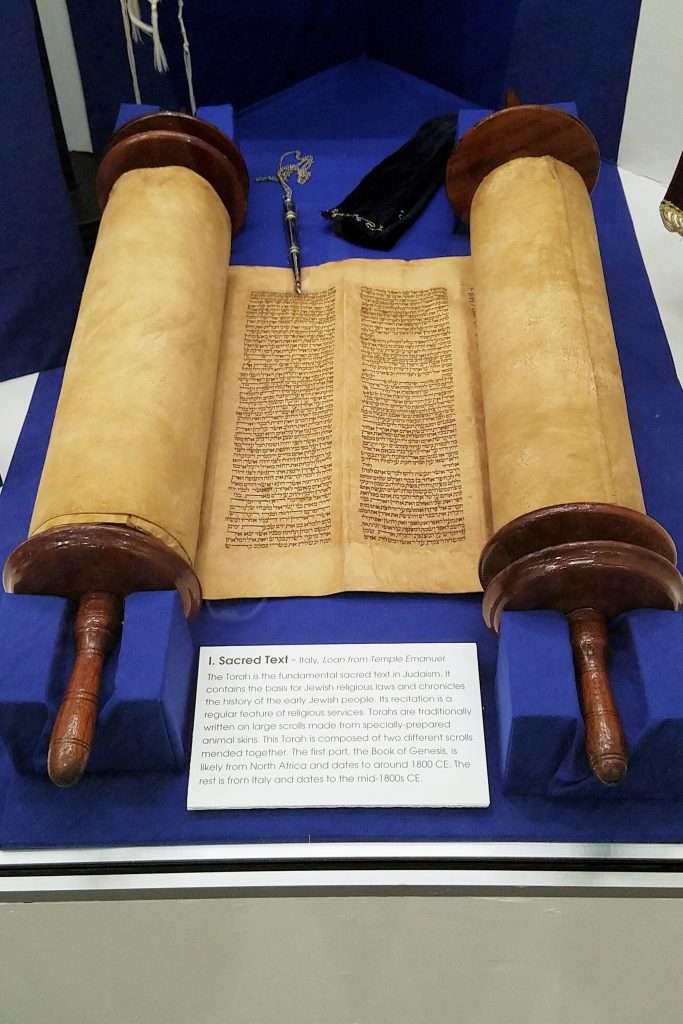
I. Sacred Text
Italy
Loan from Temple Emanuel
The Torah is the fundamental sacred text in Judaism. It contains the basis for Jewish religious laws and chronicles the history of the early Jewish people. Its recitation is a regular feature of religious services. Torahs are traditionally written on large scrolls made from specially prepared animal skins. This Torah is composed of two different scrolls mended together. The first part, the Book of Genesis, is likely from North Africa and dates to around 1800 CE. The rest is from Italy in the mid-1800s CE.
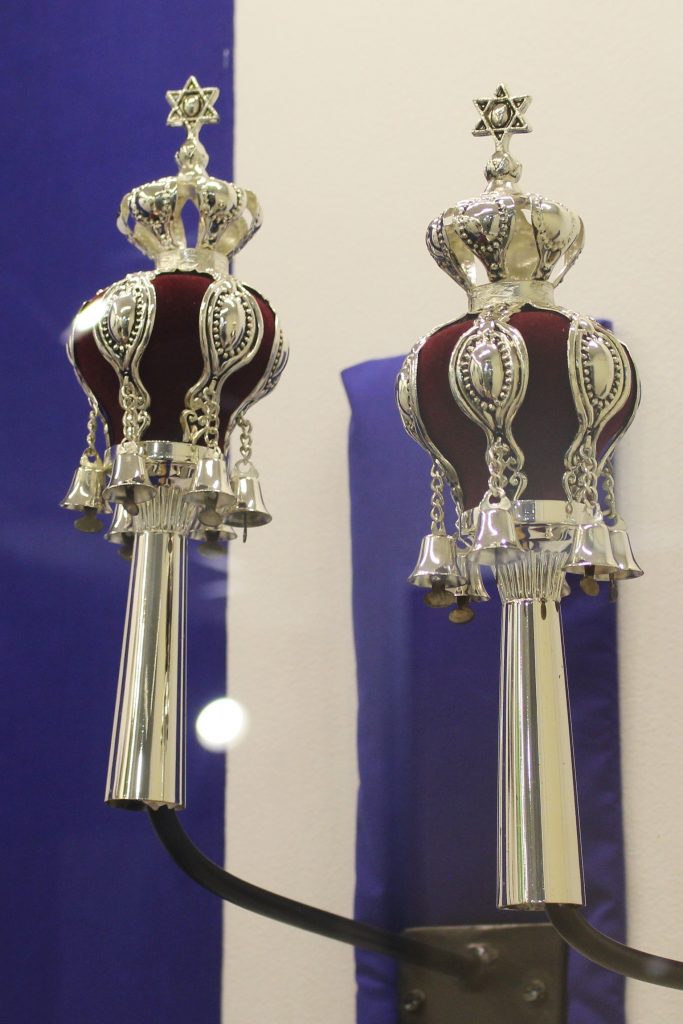
J. Scroll Ornaments
Italy
Loan from Temple Emanuel
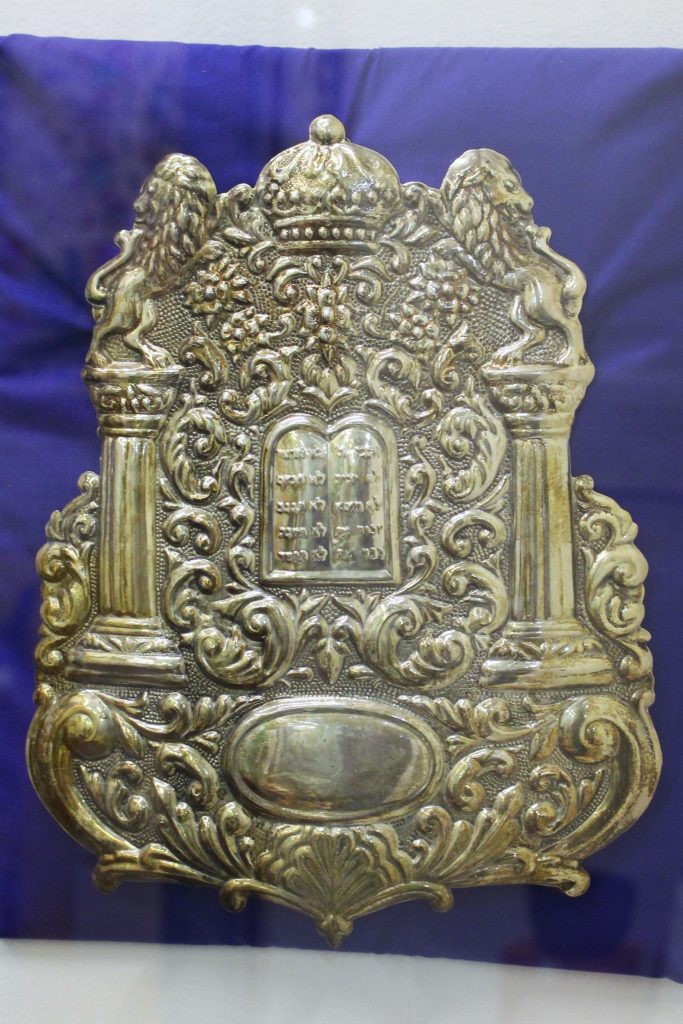
K. Scroll Ornament
Italy
Loan from Temple Emanuel
Silver ornaments are used to decorate the Torah when it is not being used. Elaborate decorations are common features of religious art, as it is believed this is one way of honoring God.
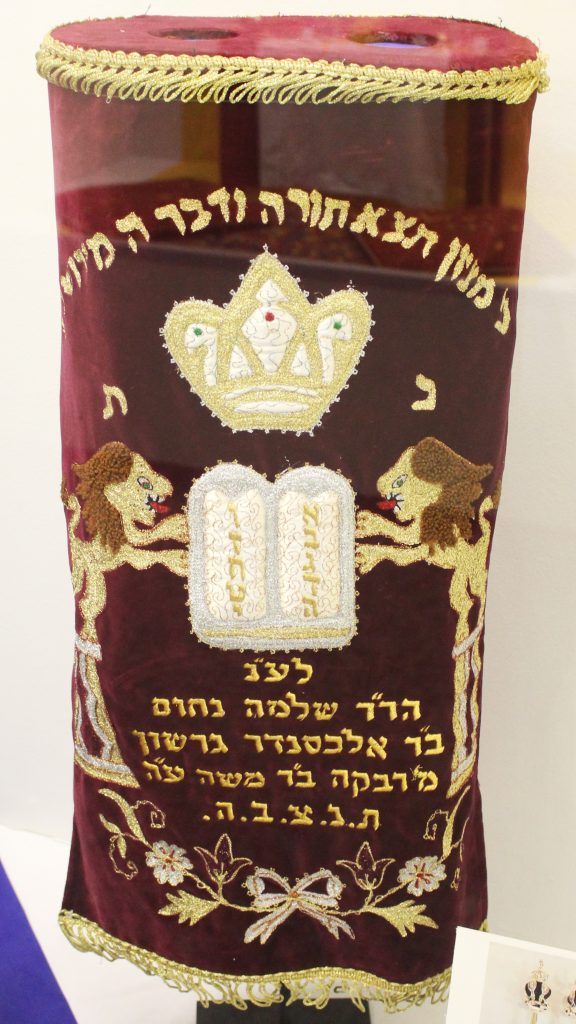
L. Scroll Cover
Italy
Loan from Temple Emanuel
The two stone tablets are a representation of the Ten Commandments. The lions are symbols of Jerusalem.
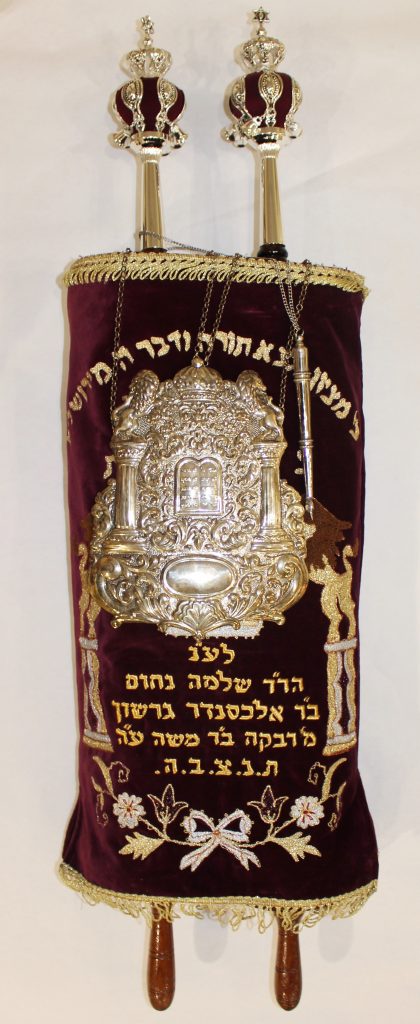
I-L. Sacred Text with Scroll Cover and Ornaments
Italy
Loan from Temple Emanuel
This is what the Torah looks like with all of the pieces put together, as it appears when it is not being used.

